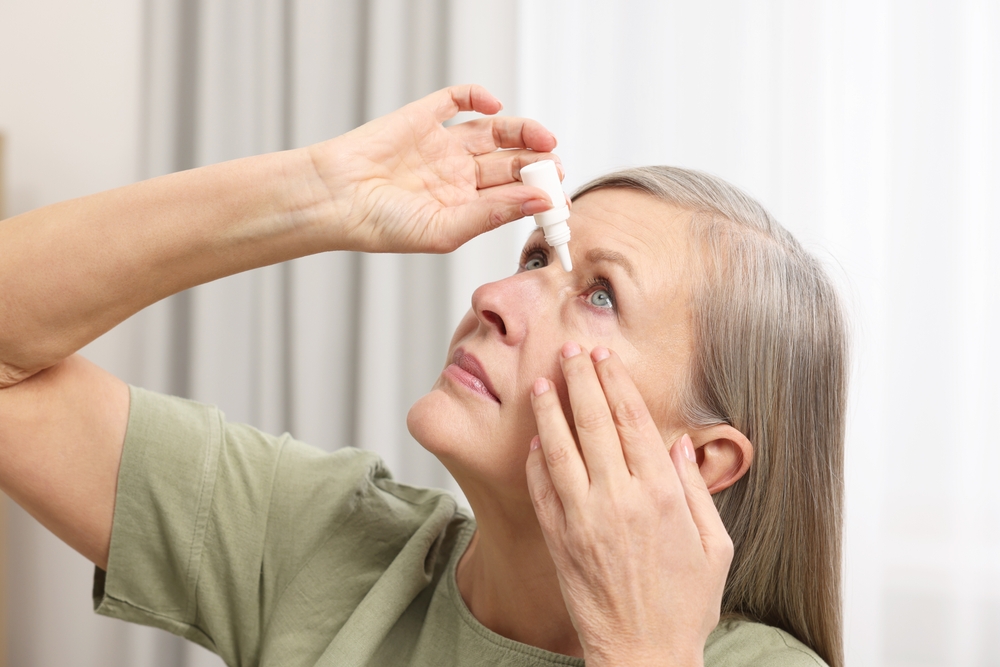What Are the Latest Advances in Dry Eye Treatments?
October 2, 2024
If you have been diagnosed with dry eye, you are not alone! According to the American Academy of Ophthalmology, dry eye is one of the most commonly diagnosed eye conditions, affecting millions of Americans.
Treatment for dry eye has come a long way. Today, there are advanced treatments that can effectively treat dry eye and restore the comfort and quality of your vision after a dry eye diagnosis.
Keep reading to learn more about dry eye, including some of the latest advancements in treatment!
What is Dry Eye?
 Dry eye occurs when the eyes are unable to produce enough tears or enough high-quality tears. Tears are vital for keeping the eyes lubricated, clearing away potential eye irritants, and ensuring the surface of the eye is smooth, allowing for optimal visual clarity and comfort.
Dry eye occurs when the eyes are unable to produce enough tears or enough high-quality tears. Tears are vital for keeping the eyes lubricated, clearing away potential eye irritants, and ensuring the surface of the eye is smooth, allowing for optimal visual clarity and comfort.
Healthy tears consist of three layers: the lipid (oily) layer, the aqueous (watery) layer, and the mucin (mucus) layer. These three layers combine to produce high-quality tears that keep your eyes moist and clear.
Tears are produced in the lacrimal glands. These glands are located in the upper and outer parts of the eye socket.
The meibomian glands are also important for healthy tears. They produce an oily substance called meibum, which helps keep the water in tears from evaporating.
While dry eye symptoms can vary, some of the most common symptoms include dryness, redness, itchy eyes, blurry vision, a feeling like something is stuck in the eye, burning, and a sandy or gritty sensation. Untreated dry eyes can lead to eye fatigue, headaches, difficulty wearing contact lenses, and excessively watery eyes.
Are There Different Types of Dry Eye?
There are two primary types of dry eye. These types are aqueous dry eye and evaporative dry eye.
Aqueous dry eye is caused by a lack of tears. This type of dry eye occurs when the lacrimal glands do not produce enough of the watery layer of tears.
Evaporative dry eye is caused by meibomian gland dysfunction, which prevents the glands from producing meibum and allows tears to evaporate too quickly. It accounts for approximately sixty-five percent of all cases of dry eye.
What Dry Eye Treatments Are Available?
Untreated dry eyes can seriously affect the health of your eyes and the quality of your vision. If left untreated, dry eye can increase your risk of developing eye infections, corneal abrasions, and corneal ulcers, all of which can lead to potentially permanent vision impairment.
At Advanced Eye Care & Aesthetics, we offer some of the latest advances in dry eye treatment. These treatments include lubricating eye drops, medicated eye drops like Restasis, and other therapies like LipiFlow and Prokera.
Lubricating Eye Drops
Often, the first method of treatment for dry eyes is lubricating eye drops. These drops act as artificial tears and contain lubricating agents that supplement natural tear production.
Many eye drops for dry eye do not require a prescription and can be purchased in our office or at your local drugstore. Prescription eye drops are available for more advanced causes of dry eye.
Restasis
If dry eyes are caused by eye inflammation that blocks the production of tears, Restasis is a highly effective prescription eye drops. It treats underlying inflammation and helps increase the eyes’ ability to produce tears.
Many eye doctors consider Restasis to be the standard of medical care for dry eyes. They often use it in combination with other medications, such as Lotemax gel and Azasite eye drops.
It is very safe and can be used for very long periods of time without losing its effectiveness.
LipiFlow
If meibomian gland dysfunction is the cause of dry eye, Lipiflow can help. LipiFlow is a unique system that combines digital imaging to diagnose dry eye and a treatment that applies painless heat and compression to unclog the meibomian glands.
The system uses LipiView to measure the lipid layer of your tear film. The LipiView captures an image of your eye and provides vital information for treatment planning.
LipiFlow treatment involves applying a device to your eyes that heats and massages the eyelids to unblock the meibomian glands and promote meibum production. Each LipiFlow treatment session takes approximately twelve minutes, and most patients say the treatment feels like a twitching eyelid or gentle pulsation.
The treatment helps to liquefy the hardened or clogged oil in the meibomian glands and can offer noticeable relief from dry eye symptoms within two to six weeks.
Prokera
The latest and more advanced treatment we offer for dry eye is Prokera. Prokera is a corneal bandage that is used to treat and heal a wide range of eye injuries and conditions, including dry eye.
While Prokera looks like a contact lens, it is significantly different. It is larger and thicker than a standard contact lens and contains amniotic membrane tissue held in place by a pair of flexible polycarbonate rings.
When implanted in one or both eyes, Prokera protects the eyes, encourages healing, and promotes corneal surface regeneration. In addition to treating dry eye, Prokera is also used to treat keratitis, corneal scars and defects, and other eye conditions that cause harmful ocular inflammation.
With the advanced treatments at Advanced Eye Care, you can protect the health and quality of your vision from the symptoms of dry eye. Our experienced team of eye care specialists can accurately diagnose the cause of your dry eye and recommend effective treatments!
Do you want to experience relief from dry eye symptoms? Schedule an appointment at Advanced Eye Care & Aesthetics in Bel Air, MD, today!



